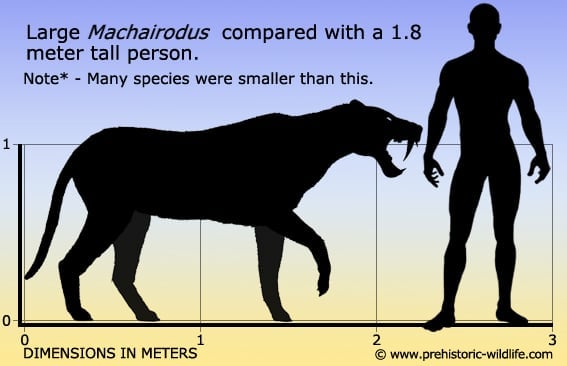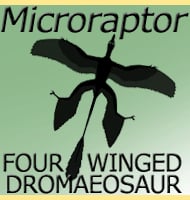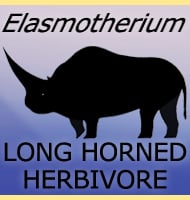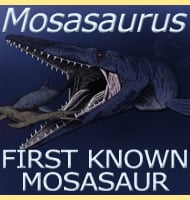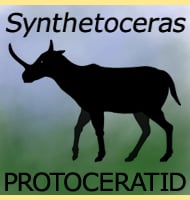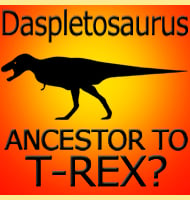In Depth
While Machairodus possesses enlarged canine fangs they seem to be intermediate between regular sized canines and the larger canines exhibited by other similar cats. These teeth combined with squat proportions and a robust physique has led to speculation that Machairodus’s hunting behaviour was that of an ambush predator. The popular depiction of Machairodus hunting is actually the same method that has been proposed for most other heavily built cats with enlarged canines, and this is lurking within the low tree canopy and jumping down onto unsuspecting prey. In the initial surprise of the attack Machairodus would bite into a critical area such as the neck for the best chance of severing an artery. With such a wound inflicted, the prey would quickly succumb to blood loss and collapse, allowing Machairodus to begin eating.
While Machairodus has a large number of species attributed to the genus these can actually be split into two distinct forms of basal and advanced. The more advanced form has a longer forearm and a shorter lumbar region which resulted in the back of the more advanced Machairodus beginning to slope downwards towards the rear. Another prehistoric big cat named Homotherium has a similar but more extreme body plan which is partly why Machairodus is thought to be a possible ancestor to Homotherium. Machairodus also shares another similar trait with its enlarged Canines in that when individuals of both genera were young, both front and back edges of the canines were serrated, but became worn within the first few years of life.
The large number of Machairodus specimens has allowed for the identification of male and female individuals. This also revealed clear sexual dimorphism in at least one species, M. giganteus, where the male is consistently larger than the female. This is an expected trait as male mammals are often heavier if not slightly larger than the females of their species, but evidence is often lacking in animals known only from fossils because their preservation and discovery depends upon just the right set of circumstances.
Further Reading
– Terti�re Raubtiere des westlichen Sibiriens; I. Machairodontinae (Tertiary Carnivors from Western Sibiria; I. Machairodontinae). Akademia Nauk SSSR. Trudy Paleozoologiceskogo Instituta. – Leningrad 5:111-154 – Y.u. A. Orlov – 1936. – On Two Skulls of Machairodus from the Lower Pleistocene Beds of Choukoutien – Bulletin of the Geological Society of China Volume 19, Issue 3, pages 235–256, September 1939 – P. Teilhard De Chardin – 1939. – Machairodus sp. from the Lower Pliocene bone breccia of Węże (Poland) – Acta Palaeontologica Polonica 35 (1-2), 1990: 73-83. – Henryk Dybka – 1990. – A new species of Machairodus from the late Miocene Kalmakpai locality in eastern Kazakhstan (USSR). – Annales Zoologici Fennici 28(3-4):361-369 – M. V. Sotnikova – 1991. # – A new machairodontine (Carnivora, Felidae) from the Late Miocene hominid locality of TM 266, Toros-Menalla, Chad. – Comptes Rendus Paleovol 4:243-253 – S. Peigne, L. Bonis, A. Likius, H. T. Mackaye, P., Vignaud, & M. Brunet – 2005. – Machairodus aphanistus (Felidae, Machairodontinae, Homotherini) from the late Miocene (Vallesian, MN 10) site of Batallones-3 (Torrej�n de Velasco, Madrid, Spain) – Journal of Vertebrate Paleontology – Marcos F. G. Monescillo, Manuel J. Salesa, Mauricio Ant�n, Gema Siliceo & Jorge Moralesa – 2014. – A skull of Machairodus horribilis and new evidence for gigantism as a mode of mosaic evolution in machairodonts (Felidae, Carnivora). – Vertebrata PalAsiatica. 54: 302–318. – Tao Deng, Yun-Xiang Zhang & Z. Jack Tseng – 2016. – Alaeoecological implications of the sympatric distribution of two species of Machairodus (Felidae, Machairodontinae, Homotherini) in the Late Miocene of Los Valles de Fuentidue�a (Segovia, Spain). – Historical Biology. 31 (7): 903–913. – Marcos Fernandez-Monescillo, Mauricio Anton & Manuel J. Salesa – 2017.
